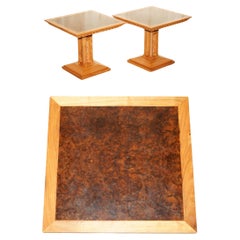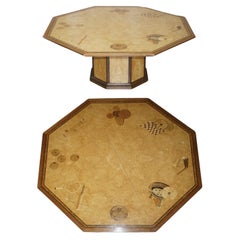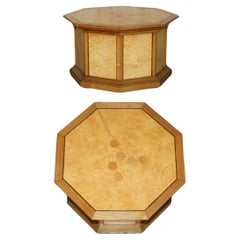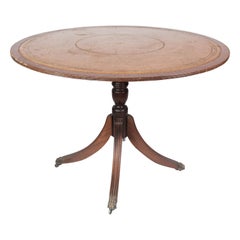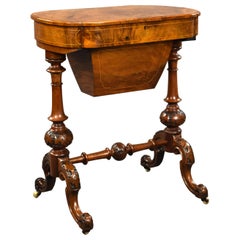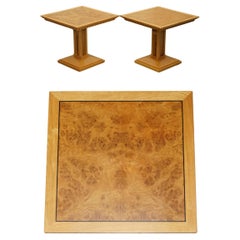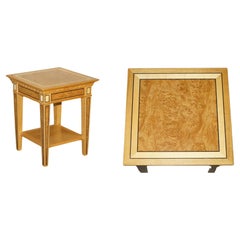David Linley Tables
Consider it the ultimate royal seal of approval: When the young Linley founder, David Linley, made a decorative box as a teenager — a project he’d crafted at Bedales School that impressed his teacher — it was proudly passed around as a cigar box at parties by the Queen Mother. Of course, the royal treatment makes a bit more sense when you consider that the Queen was simply grandmother to the future furniture designer Linley, formally David Albert Charles Armstrong-Jones, second earl of Snowdon, son of Princess Margaret and photographer Antony Armstrong-Jones.
Born in London, Linley was creative from an early age — a characteristic eagerly encouraged at home with his parents and at Kensington Palace with the extended family. After completing his studies in carpentry and design at Parnham House in 1982, Linley set up his first studio. Within three years he had moved to King’s Road in Chelsea and, with his friend painter and designer Matthew Rice, officially cofounded Linley, a source for luxury furniture and accessories and bespoke carpentry and millwork.
The brand was a quick success. When Linley presented its first line at Christie’s in 1985 — a collection of furniture and more called “Venetian,” which was inspired by the Italian city’s grandiose Gothic architecture — the entire lot sold out on the day of its presentation. Besides Linley the brand being a commercial success, Linley the founder was somewhat of a marvel: At the time, the designer was the first of the royal family to undertake any sort of vocational work, let alone establish their own brand.
David Linley’s furniture has become known over the years for its fine craftsmanship, detailed marquetry and inlay and use of rare and exquisite woods. His tables, seating, other furnishings and decorative objects owe consistently to traditional methods and conventions as often as they do clean modernity. The designer has long looked to Chippendale furniture as well as other styles that gained prominence during the 18th century as much as he has toward the future.
Now, in addition to its furniture, accessories and custom millwork, Linley operates an interior design business, outfitting homes (and a few cars and yachts) in the brand’s singularly chic style. And while the company’s output is marked by style, craftsmanship still comes first: “I’m a maker, not a designer,” the earl once proclaimed.
Find a collection of David Linley furniture on 1stDibs.
20th Century English Art Deco David Linley Tables
Satinwood, Walnut
1990s English Sporting Art David Linley Tables
Wood
Late 20th Century English Art Deco David Linley Tables
Satinwood
1920s Danish Other Vintage David Linley Tables
Leather, Mahogany
Mid-19th Century English Victorian Antique David Linley Tables
Walnut
2010s American Neoclassical David Linley Tables
Walnut
21st Century and Contemporary German Mid-Century Modern David Linley Tables
Chrome
1930s European Industrial Vintage David Linley Tables
Beech
Early 1900s French Country Antique David Linley Tables
Oak
2010s American Mid-Century Modern David Linley Tables
Walnut, Pine
Mid-20th Century North American Mid-Century Modern David Linley Tables
Brass
21st Century and Contemporary Chinese Organic Modern David Linley Tables
Reclaimed Wood
2010s Italian Modern David Linley Tables
Steel
21st Century and Contemporary American Arts and Crafts David Linley Tables
Cherry
2010s Organic Modern David Linley Tables
Shell, Wood, Teak, Reclaimed Wood
20th Century English Art Deco David Linley Tables
Satinwood, Walnut
20th Century English Art Deco David Linley Tables
Satinwood, Walnut
20th Century English Art Deco David Linley Tables
Amboyna
20th Century English Art Deco David Linley Tables
Sycamore, Walnut
20th Century English Modern David Linley Tables
Walnut
1990s English Modern David Linley Tables
Sycamore, Walnut
